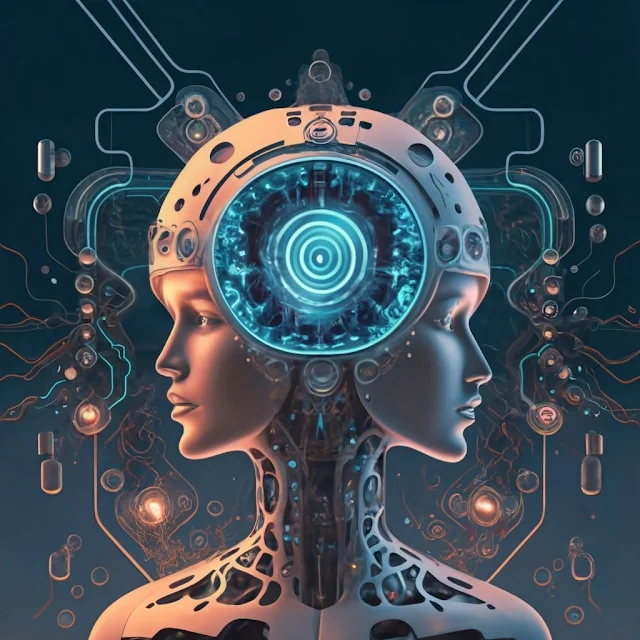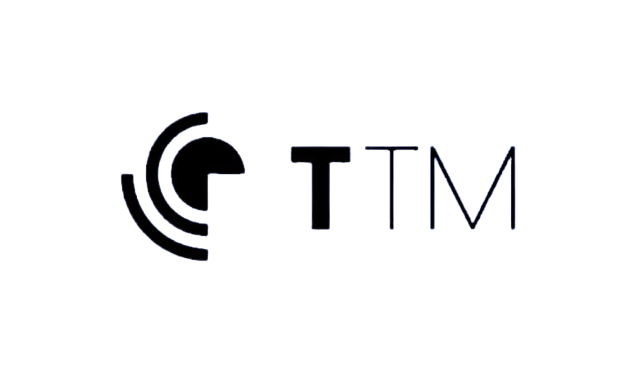The World of Vision Software Technologies
We'll set the stage for the article by highlighting the significance of vision software technologies and their evolution. This section will serve as a hook to engage readers and introduce the topics to be covered.
Vision Technology Landscape
1. Vital Vision Technology: Innovations and Impact
- Here, we'll delve into the innovations and impact of Vital Vision Technology, emphasizing its relevance in the industry and its contributions to technological advancements.
2. 2B Vision Technologies: Pioneering the Future
- This section will focus on the pioneering efforts of 2B Vision Technologies, showcasing its role in shaping the future of vision software technologies.
3. 3D Vision Technologies: A New Dimension
- We'll explore the concept of 3D Vision Technologies, highlighting its potential to revolutionize visual experiences and applications.
4. Absolute Vision Technologies: Precision and Accuracy
- This part will emphasize the precision and accuracy offered by Absolute Vision Technologies, positioning it as a leader in the field.
5. Accenture Digital Health Technology Vision 2022: Insights and Trends
- This subheading will provide insights into Accenture's Digital Health Technology Vision for 2022, discussing the latest trends and industry insights.
Accenture's Technology Vision Series
1. Accenture Technology Vision 2018: Key Takeaways
- Here, we'll outline the key takeaways from Accenture's Technology Vision for 2018, highlighting its impact on the technological landscape.
2. Accenture Technology Vision 2019: Shaping Industries
- This section will focus on how Accenture's Technology Vision for 2019 has contributed to shaping various industries through technological advancements.
3. Accenture Technology Vision 2020: Rethinking Technology
- We'll explore the theme of rethinking technology as presented in Accenture's Technology Vision for 2020, emphasizing its implications for the industry.
4. Accenture Technology Vision 2021: Post-Pandemic Paradigms
- This part will discuss the post-pandemic paradigms outlined in Accenture's Technology Vision for 2021, shedding light on the industry's response to global challenges.
5. Accenture Technology Vision 2022: A Glimpse into the Future
- Based on Accenture's Technology Vision for 2022, we will explore new developments and trends in technology in this section.
6. Accenture Technology Vision 2023: Predicting Tech Trends
- This section will focus on predicting upcoming tech trends based on Accenture's Technology Vision for 2023, offering valuable insights for industry professionals.
Vision Accessibility
1. Access Technology for the Blind and Low Vision: Empowering Individuals
This subheading will highlight the beneficial effects of access technology on individuals, emphasizing how empowering it is for the blind and those with low vision.
2. Access Vision Technology: Bridging Gaps
- Here, we'll discuss how access vision technology serves to bridge gaps in accessibility, promoting inclusivity and equal opportunities.
3. Accurate Technologies Vision: Enhancing Lives
- This section will highlight how Accurate Technologies Vision is enhancing lives through its focus on accuracy and reliability in vision technology.
4. Advanced Vision Technology Group: Revolutionizing Industries
- We'll showcase the revolutionary impact of Advanced Vision Technology Group on various industries, positioning it as a key player in technological advancements.
Advancements in Computer Vision
1. AI Vision Technology: Unleashing Potential
- This part will explore the potential unleashed by AI vision technology, discussing its applications and implications for the future.
2. All Vision Technologies: A Comprehensive Overview
- Here, we'll provide a comprehensive overview of All Vision Technologies, showcasing its diverse applications and contributions to the industry.
Night Vision Technology
1. Applications of Night Vision Technology: Beyond Military
- This section will highlight the diverse applications of night vision technology beyond military use, shedding light on its broader impact.
2. Applied Machine Vision Technologies: Real-World Applications
- We'll discuss the real-world applications of applied machine vision technologies, emphasizing their practical uses across different sectors.
3. Applied Vision Technology: Transforming Industries
- This part will focus on how applied vision technology is transforming industries, showcasing its role in driving technological advancements.
4. Army's New Night Vision Technology: Enhancing Security
- Here, we'll discuss the enhanced security provided by the army's new night vision technology, emphasizing its significance in safeguarding communities.
5. Ascent Vision Technologies in Australia: A Global Perspective
- This section will provide a global perspective on Ascent Vision Technologies in Australia, highlighting its international reach and impact.
Assistive Technology for Vision Impaired Individuals
1. Assistive Technology for Low Vision Students: Breaking Barriers
- We'll discuss how assistive technology is breaking barriers for low vision students, enabling them to access education and information more effectively.
2. Assistive Technology for Vision Impaired Individuals: Improving Quality of Life
- This part will highlight the ways in which assistive technology is improving the quality of life for vision-impaired individuals, emphasizing its role in enhancing independence and daily activities.
3. Assistive Technology in the Classroom: Empowering Education
- Here, we'll focus on how assistive technology is empowering education in the classroom, providing students with vision impairments the tools they need to succeed academically.
Leaders in Vision Technology
This section will spotlight key players in the vision technology industry, showcasing their innovations and impact on the technological landscape.
1. AVT Advanced Vision Technology Inc: Innovations and Impact
- We'll delve into the innovations and impact of AVT Advanced Vision Technology Inc, highlighting its contributions to the field of vision software technologies.
2. Axess Vision Technology: Redefining the Future
- This part will focus on how Axess Vision Technology is redefining the future of vision software technologies, positioning it as a leader in the industry.
3. Basler Vision Technologies: Quality in Sight
- Here, we'll emphasize the commitment to quality exhibited by Basler Vision Technologies, showcasing its role in setting industry standards.
4. Beijing Microlive Vision Technology: A Glimpse into Chinese Innovations
- This section will provide insights into the innovations emerging from Beijing Microlive Vision Technology, offering a glimpse into Chinese advancements in the field.
Night Vision Technology
This section will explore the advancements and applications of night vision technology, highlighting its significance in various contexts.
1. Best Night Vision Technology: What Sets Them Apart
- We'll discuss the distinguishing features of the best night vision technology, emphasizing what sets them apart from other solutions in the market.
2. Vision Statements for Technology Companies: Inspiring the Future
Here, we'll examine technological businesses' vision statements in relation to night vision technology, highlighting their dedication to igniting the future via innovation.
Bionic Vision Technologies
1. The Marvel of Bionic Vision Technologies
- We'll discuss the marvel of bionic vision technologies, emphasizing their transformative impact on individuals with visual impairments.
Assistive Technology for Vision Impaired
1. Empowering the Blind and Low Vision: A Closer Look
- Here, we'll take a closer look at how assistive technology is empowering individuals who are blind or have low vision, emphasizing its role in promoting independence and accessibility.
2. Blue Vision Technologies: Beyond Boundaries
- This part will highlight the boundary-pushing innovations of Blue Vision Technologies, showcasing its commitment to expanding possibilities in the field.
3. Boe Vision Electronic Technology: The Future of Displays
- We'll discuss the future of displays as envisioned by Boe Vision Electronic Technology, emphasizing its contributions to the visual technology landscape.
We'll summarize the ongoing revolution in vision software technologies and the promise of a brighter future, tying together the key insights presented throughout the article.
Frequently Asked Questions (FAQs)
1. What are vision software technologies?
Vision software technologies encompass a wide range of software applications designed to process and analyze visual data. These technologies include computer vision, image recognition, object detection, and video analytics, among others. They are used in various industries such as healthcare, automotive, retail, and security for tasks like quality control, facial recognition, and autonomous driving.
2. How do 3D vision technologies work?
3D vision technologies work by using various methods to capture and process depth information from a scene. This can be achieved through techniques such as stereo vision, structured light, or time-of-flight sensing. By analyzing the differences in perspective or the time it takes for light to travel, these technologies create a 3D representation of the environment, which can be used for applications like 3D scanning, augmented reality, and robotics.
3. What are the key takeaways from Accenture's Technology Vision series?
Emerging technological trends and their effects on businesses are frequently the main lessons to be learned from Accenture's technological Vision series. These may include insights into the adoption of AI, the rise of extended reality, the importance of data veracity, the need for human-AI collaboration, and the evolution of digital twins. These takeaways can help businesses understand and prepare for the technological shifts shaping their industries.
4. How does assistive technology help vision-impaired students?
Assistive technology helps vision-impaired students by providing tools and devices that enable them to access educational materials, navigate their surroundings, and communicate effectively. This can include screen readers, magnification software, braille displays, tactile graphics, and navigation apps. By using these technologies, vision-impaired students can participate more fully in educational activities and develop essential skills.
5. Who are the top players in the field of night vision technology?
Leaders in the night vision technology industry include companies like FLIR Systems, L3Harris Technologies, BAE Systems, and Thales Group. These companies specialize in developing advanced night vision systems for military, law enforcement, and commercial applications, using technologies such as thermal imaging and image intensification to provide visibility in low-light conditions.
6. What is the significance of bionic vision technologies?
Bionic vision technologies hold significance as they aim to restore vision to individuals with visual impairments through the use of implanted devices that stimulate the visual pathway. These technologies have the potential to significantly improve the quality of life for people with conditions such as retinitis pigmentosa and age-related macular degeneration, offering the possibility of restored vision and increased independence.
7. How does vision technology impact different industries?
Vision technology impacts different industries in various ways. In healthcare, it enables medical imaging for diagnosis and treatment planning. In automotive, it powers advanced driver-assistance systems and autonomous vehicles. In security, it enhances surveillance and threat detection. The impact of vision technology is pervasive and continues to evolve across industries.
8. What is the future of vision software technologies?
The future of vision software technologies is likely to involve advancements in areas such as real-time video analytics, edge computing for faster processing, improved object recognition and tracking, enhanced augmented reality experiences, and more sophisticated human-computer interaction through vision-based interfaces. Additionally, the integration of vision technologies with AI and machine learning will further expand their capabilities and applications.
9. Are there any ethical concerns related to AI vision technology?
Privacy problems, prejudice in algorithmic decision-making, and the possibility of abuse in societal control and surveillance are some of the ethical challenges surrounding AI vision technology. Ensuring transparency, fairness, and accountability in the development and deployment of AI vision systems is crucial to addressing these concerns and fostering trust in these technologies.
10. How can individuals with visual impairments benefit from assistive technology?
Individuals with visual impairments can benefit from assistive technology in numerous ways. Screen readers and magnification software enable access to digital content, while braille displays and tactile graphics provide alternative ways to consume information. Navigation apps and devices help with mobility, and object recognition systems assist in identifying objects in the environment. By leveraging these technologies, individuals with visual impairments can enhance their independence and participation in various activities.









.jpg)
0 Comments